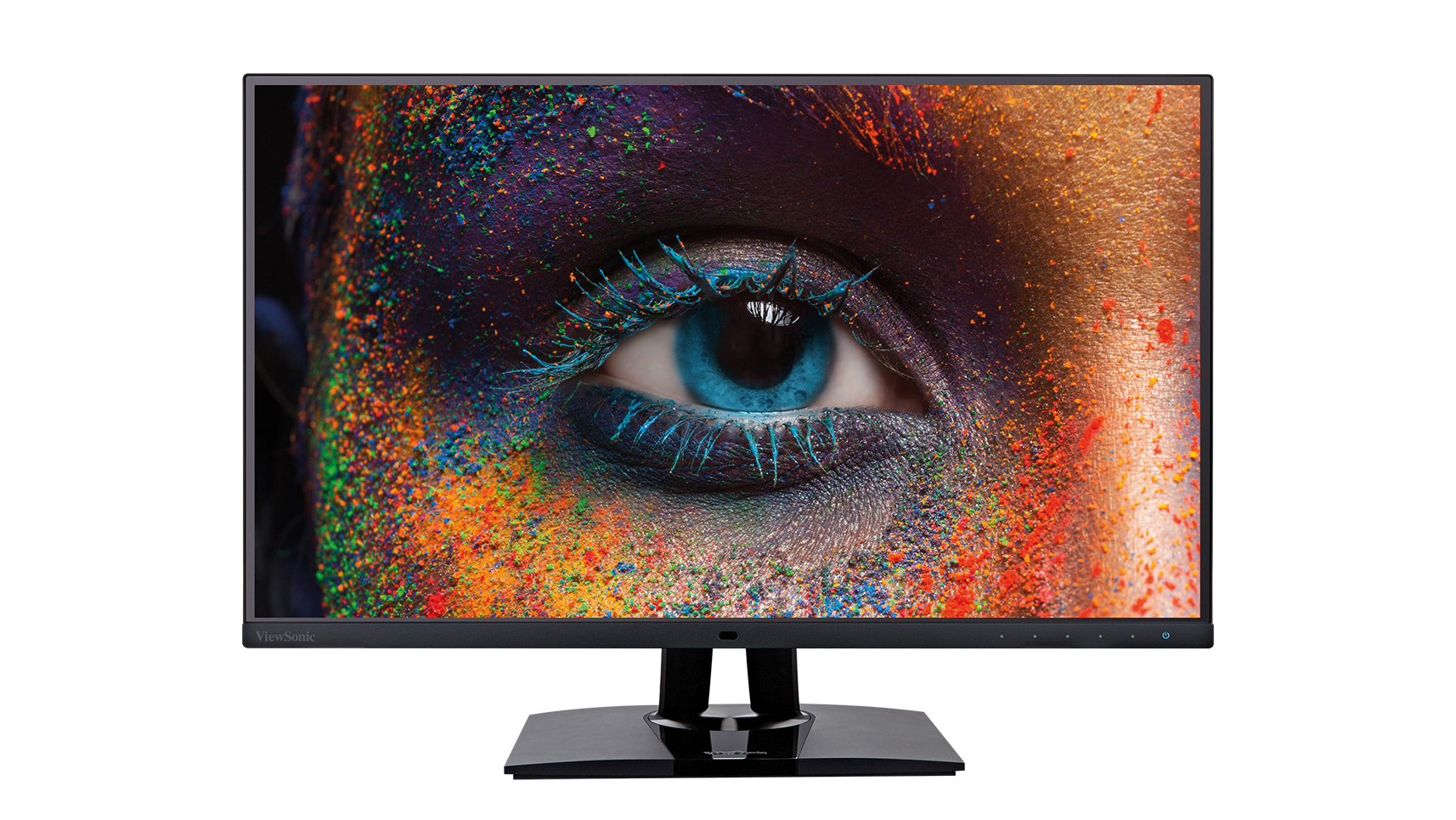ViewSonic VP2785-2K review: A steal for print and video
It has its niggles, but this is a superb choice for creative pros on a tight budget


-
+
Fantastic Adobe RGB and DCI-P3 colour accuracy
-
+
Reasonable value
-
+
Hardware calibration support
-
-
Drab design
-
-
Inconvenient ports

At first sight, this 1440p 27in monitor appears to be overpriced: after all, you can buy the 4K Dell UltraSharp U2720Q for almost £60 less. However, unlike the Dell, this ViewSonic isn’t designed for life in any old office. Instead, it’s aimed at creative professionals who will be jumping from video to print, and with the knowledge that they can trust the colours this panel shows. Naturally, it supports hardware calibration, and you can set a regular reminder in the OSD that it’s time for recalibration.
What’s most impressive for a monitor this affordable is that it comes with the promise of 100% coverage of the Adobe RGB gamut and 96% of DCI-P3. Switching between these presets is easy through the OSD and you can even use the dual colour engine to have two computers’ inputs side by side.
While our testing didn’t match ViewSonic’s figures, we aren’t going to argue with 97% coverage of the Adobe RGB gamut, nor 91% of DCI-P3; factor in average Delta E figures of 0.53 and 0.4 respectively and you can be confident of colour accuracy too. We suggest you steer clear of its sRGB mode, however. Here, its measured contrast ratio dropped to 418:1 – everything looks drab as a result. One area we absolutely can’t criticise is the uniformity of its 340cd/2 brightness across the screen; the ViewSonic’s figures are a match for high-end models that cost over £1,000.
Where it can’t match its top-end rivals is styling, with its plain black plastic finish and dull stand unlikely to stir much ardour in the eyes of its target audience. All the features are here, though, whether that’s pivoting, 130mm of height adjustment or the inclusion of a three-port USB-A hub. These are all hidden away at the back, which is awkward when you want to quickly add a thumb drive, and note there are no speakers (a 3.5mm jack is again inconveniently at the rear).
Do any of these criticisms diminish its impact? We think not. If you’re a creative professional on a budget, and especially if you work in both print and video, this is a steal.
ViewSonic VP2785-2K specifications
| Screen size | 27in |
| Screen resolution | 2.560 x 1,440 |
| Screen technology | IPS |
| Screen refresh rate | 75HZ |
| Video inputs | 1x DisplayPort 1.2, 1x HDMI 1.4, 1x USB Type-C |
| Audio inputs/outputs | 3.5mm headphone jack |
| Speakers | N/A |
| Ports | 3x USB 3.0 ports, USB-B, 1x USB Type-C (15W) |
| Adjustability | 130mm height adjustment, -5°/+21° tilt, 120° swivel, portrait mode |
| Dimensions | 612 x 215 x 415-545mm |
| Weight | 6.7kg |
| Warranty | 3yr |
Get the ITPro daily newsletter
Sign up today and you will receive a free copy of our Future Focus 2025 report - the leading guidance on AI, cybersecurity and other IT challenges as per 700+ senior executives
Tim Danton is editor-in-chief of PC Pro, the UK's biggest selling IT monthly magazine. He specialises in reviews of laptops, desktop PCs and monitors, and is also author of a book called The Computers That Made Britain.
You can contact Tim directly at editor@pcpro.co.uk.
-
 Global cybersecurity spending is set to rise 12% in 2025 – here are the industries ramping up investment
Global cybersecurity spending is set to rise 12% in 2025 – here are the industries ramping up investmentNews Global cybersecurity spending is expected to surge this year, fueled by escalating state-sponsored threats and the rise of generative AI, according to new analysis from IDC.
By Ross Kelly Published
-
 ‘Phishing kits are a force multiplier': Cheap cyber crime kits can be bought on the dark web for less than $25 – and experts warn it’s lowering the barrier of entry for amateur hackers
‘Phishing kits are a force multiplier': Cheap cyber crime kits can be bought on the dark web for less than $25 – and experts warn it’s lowering the barrier of entry for amateur hackersNews Research from NordVPN shows phishing kits are now widely available on the dark web and via messaging apps like Telegram, and are often selling for less than $25.
By Emma Woollacott Published
-
 Redis unveils new tools for developers working on AI applications
Redis unveils new tools for developers working on AI applicationsNews Redis has announced new tools aimed at making it easier for AI developers to build applications and optimize large language model (LLM) outputs.
By Ross Kelly Published